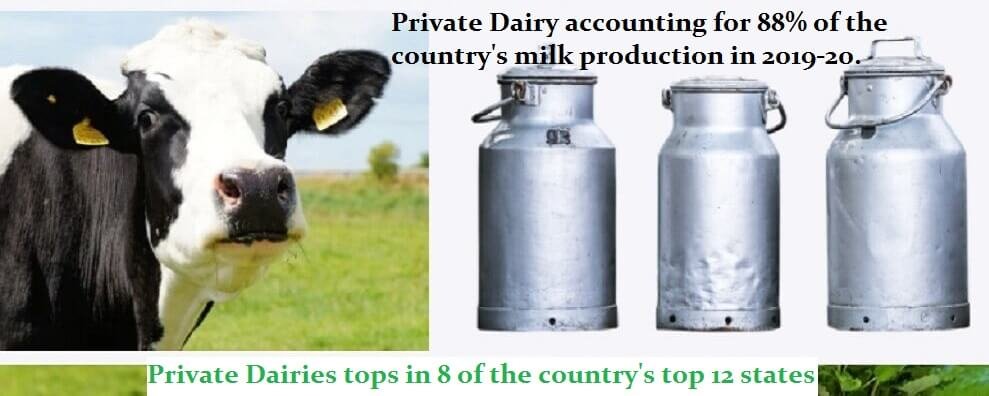According to a study commissioned by Hatsun Agro Product Ltd and conducted by Crisil, private players have a strong foothold in eight of the country’s top 12 milk-producing States, accounting for 88% of the country’s milk production in 2019-20.
Also Read: “Hatsun Agro” to set up ₹207 crore plant at Zaheerabad, Telangana
Cooperative dairy centers collect more milk than private dairies in states like Gujarat, Bihar, and Karnataka, among other states. Cooperative sector dairies in Gujarat collected 225-227 LKPD milk, while private dairies collected only 12-14 LKPD milk.
In the states of Maharashtra, private dairies accumulated 123-127 lakh kg of milk per day (LKPD) milk in 2020-21, while cooperative dairies collected 36-38 LKPD milk. Uttar Pradesh which is the country’s highest milk producer accounting for a 17% share in India’s total production, has Private dairies collected 121-125 LKPD milk, while cooperative dairies collected 5-7 LKPD milk.
Private dairy companies in the states of Tamil Nadu handle two-thirds of total milk production. Private and Cooperative dairies collected 557-562 and 535-540 LKPD milk respectively across the states.
‘In states of Karnataka, Rajasthan, Haryana, and Telangana States, dairy co-operatives receive a subsidy of 2-6 per liter for milk procurement.’ This raises the milk procurement price offered by co-operatives, incentivizing farmers to divert more milk to cooperatives.
According to the report release, ‘the Private dairy industries must match the procurement price of co-operatives for regular supply of milk, resulting in increased cost in raw material for private players.’
‘The report is comprehensive and insights a good picture of the contribution made by the private sector in the dairy industry beginning from 1992 when the dairy industry was paved up for the private players,’ says Hatsun Agro Product Ltd, Chairman RG Chandramogan, in a statement.
Also Read: Dairy farming ever ending business opportunity!
The private sector contributed to the development of the dairy sector by using its own risk capital, without any subsidies or loss write-offs from state governments.’


















Add Comment